Learning How To Identify Bees!
By Amber Barnes, Pollinator Partnership
Happy World Bee Day!
Do you want to have your mind blown? Yes? Then I suggest you step outside on a sunny, comfortably warm day, and spend some time in a native wildflower garden or blooming field. Better yet, make periodic visits to that same area at different times of the day, throughout the year!
Now that you’ve found a nice spot, you’re probably asking yourself, “Sure this is pretty, but how on earth is this going to blow my mind?” Well, if you take some time during your nature visits to simply stop and observe the wildlife surrounding you, what you will begin to notice is that there is an entire busy, bustling world going on that we rarely give a second thought. Not only will you observe pollinators at work, but you’ll also get a glimpse of the intricacies of these plant-pollinator interactions and the web of life that they support. The beauty, diversity, and connectivity represented in this tiny piece of nature is mind blowing, if you take a moment examine the community of interactions. After a little while, you may begin to really appreciate the hard, dangerous work that goes into pollination and the suite of life that depends on the presence of our bees, butterflies, moths, flies, beetles, birds, bats, and other pollinating animals.
If you’re reading this blog, then you’re probably aware that the term pollinator includes much more than just bees, but that’s the group that I’m going to be talking about today. Given that most of us only know of the existence of a handful of bees (mostly honey bees and various bumble bees) it’s often staggering when people learn that there are actually over 20,000 species currently known across the world (with many yet to be discovered)! Clearly with the number of species in the tens of thousands, it stands to reason that there is a wonderful world of diversity within this group. These bees come in a variety of shapes, sizes, and colors, and if you take a little bit of time to observe a patch of flowers, you can begin to really appreciate this small window into the diversity of the insect world.
There was a time in my life…not too long ago, when I was not only unaware of the fantastic diversity of our pollinating neighbors of the bee variety, but I was also (unnecessarily) terrified of them! How I came to get over my fear and start working on their behalf is a story for another day, but none of it would have been possible if I hadn’t been put in the situation of needing to collect seed from a plant very aptly named the “Rocky Mountain beeplant” (Cleome serrulate) while in Utah. After many days in tall patches of blooming plants up to my neck, which were literally buzzing with bees and a colleague repeatedly telling me they were just “fuzzy bunnies with wings”, I realized that there was nothing to be afraid of. With this fear of bees conquered, I was able to take advantage of an amazing opportunity back home, in Ohio to monitor pollinators for the Monarch Wings Across Ohio project. Since then, I haven’t been able to stop learning or talking about how awesome pollinators are and today I get to share a bit of this knowledge and some of my photos with you!
First, we need to cover a little terminology…
How to Identify Bees: All bees have three body segments, a head, thorax, and abdomen. The head is where large multi-faceted eyes, long slender antennae, and the mouthparts are found. The thorax is the middle segment where the wings and legs attach. Last, is the abdomen, which ends in a stinger on female bees. Many bees have developed specific structures to store and carry pollen to the nest. Special pollen‐carrying hairs unique to female bees can resemble dense broom bristles and are commonly found on the rear legs or the underside of the abdomen. Some bees carry pollen in an almost hairless, flattened pollen basket on the rear legs. Alternatively, a few species transport pollen and nectar internally and do not look like your ‘typical’ bee.
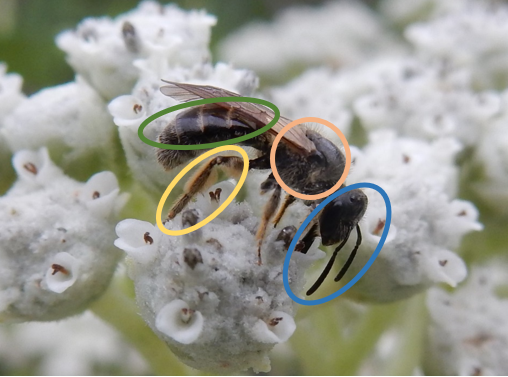
Now that you’re familiar with insect anatomy, let’s learn how to identify some of these bees on the wing!
Bumble bees (Bombus spp.)
ID Characteristics: Black body, extensively covered with black, yellow, and sometimes orange hairs on all body segments. Carry pollen in a pollen basket (corbicula) on hind legs, which appears flat and slightly shiny when pollen is not present. Robust body with a long face. They have a louder buzz and can be active on cooler cloudy days. They have a long active season – spring through fall.
Nesting: Social bees. Often nest underground in old rodent burrows or at the base of bunch grasses
Bumble Bee, by Amber Barnes
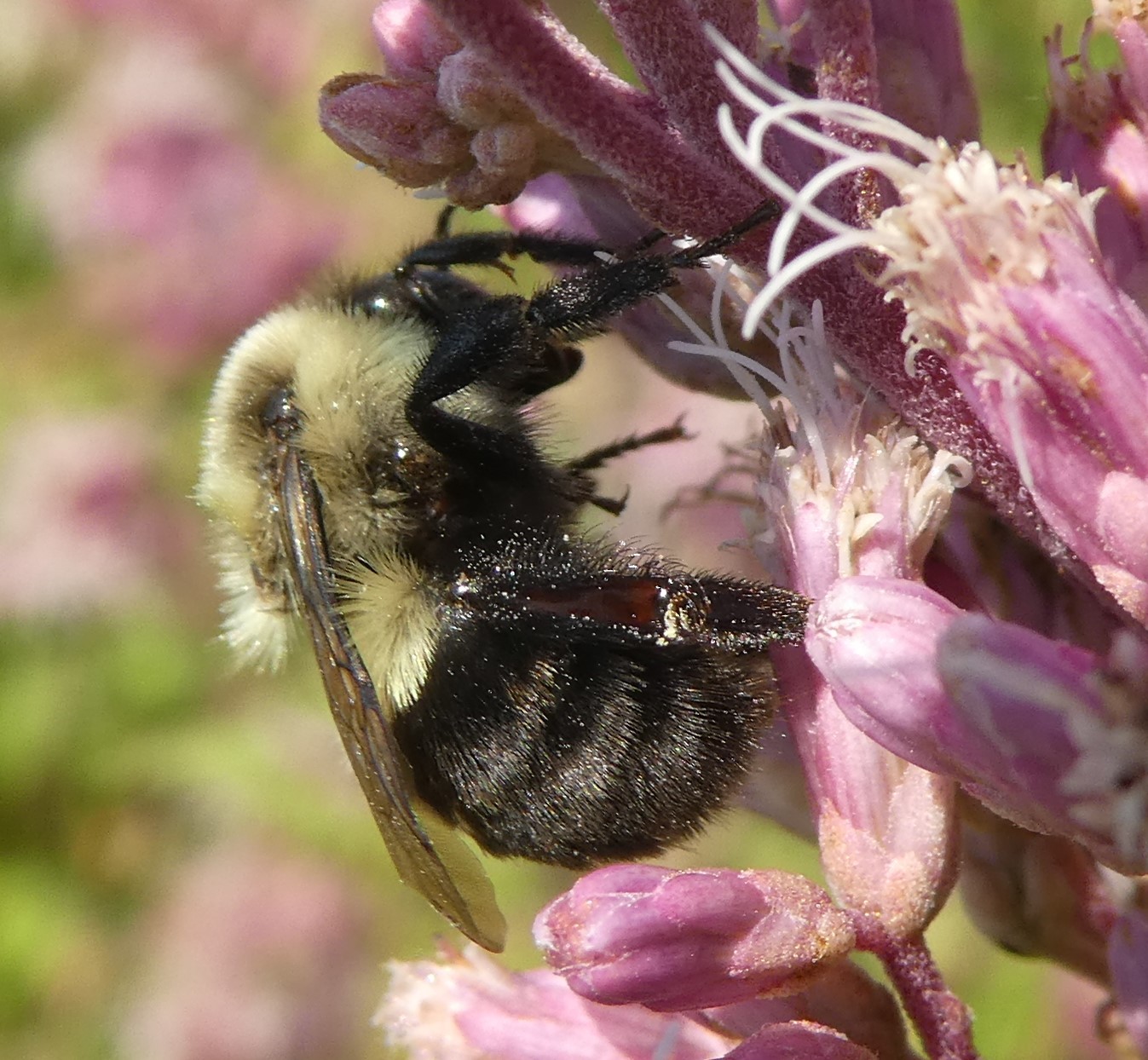
Honey bees (Apis mellifera)
ID Characteristics: Light to dark brown body with pale and dark hairs in bands on abdomen. Pollen is carried in pollen basket (corbicula) on hind legs. Abdomen is barrel-shaped and head is heart-shaped. 12-15mm. They have a long active season – spring through fall.
Nesting: Social bees. Colonies may choose to nest in man-made hives, in the open, and in cavities.
Honey Bee, by Anthony Colangelo
Leaf-cutting bees (Megachile spp.)
ID Characteristics: Black body with light or dark hairs. Pollen-carrying hairs (scopa) beneath abdomen. Head is as broad as the thorax and contain large mandibles (mouthparts) used to cut leaves. Can be seen bobbing its abdomen. Vary from small to large in size. 7-15mm[AB1]
Nesting: Solitary, but may nest in aggregations in above-ground pre-existing holes, natural or man-made. They cut circular pieces from leaves or petals with their large mandibles and use them to line their nest.
Leaf-Cutting Bee, by Anthony Colangelo
Large carpenter bees (Xylocopa spp.)
ID Characteristics: Black body with light or dark hairs. Carry pollen on hairs (scopa) present on hind legs. Body shape is similar to bumble bee, but abdomen is shiny with far fewer hairs. Face is round. 15-23mm
Nesting: Solitary, but several females may nest in the same piece of wood. True to their name, females will burrow into wood including dead trees and man-made structures.
Large Carpenter Bee, by Amber Barnes
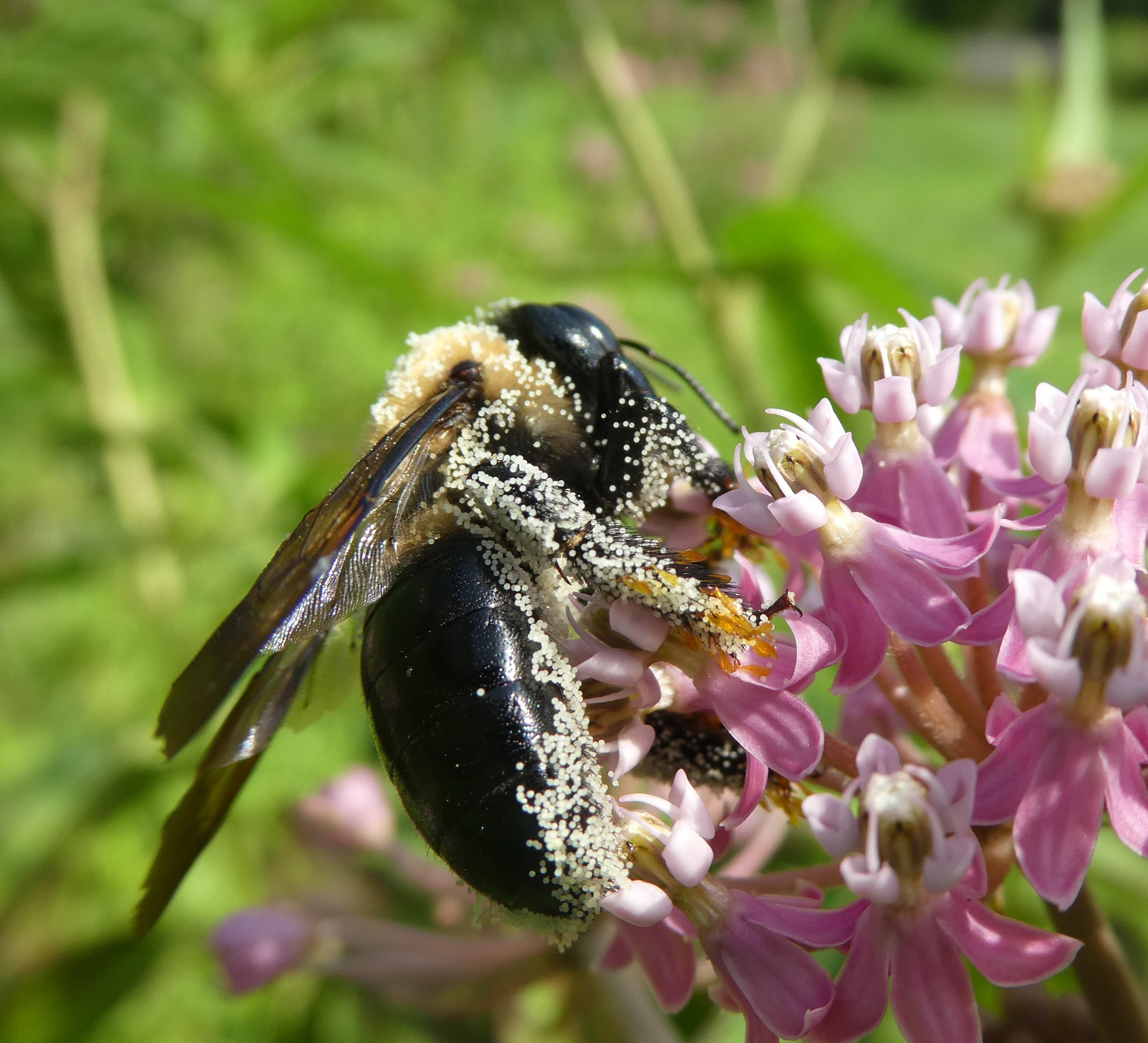
Small carpenter bees (Ceratina spp.)
ID Characteristics: Their small bodies have a dark blue-green metallic sheen and appear nearly hairless except for back legs, where pollen is carried. Key features are a rounded abdomen and a small yellow mark on the face. Females have a vertical bar and males have an upside-down “T” on their face. 5-8mm
Nesting: Solitary, twig nesting. Females will bore in soft pith or broken or trimmed twigs or canes.
Small Carpenter Bee, by Amber Barnes
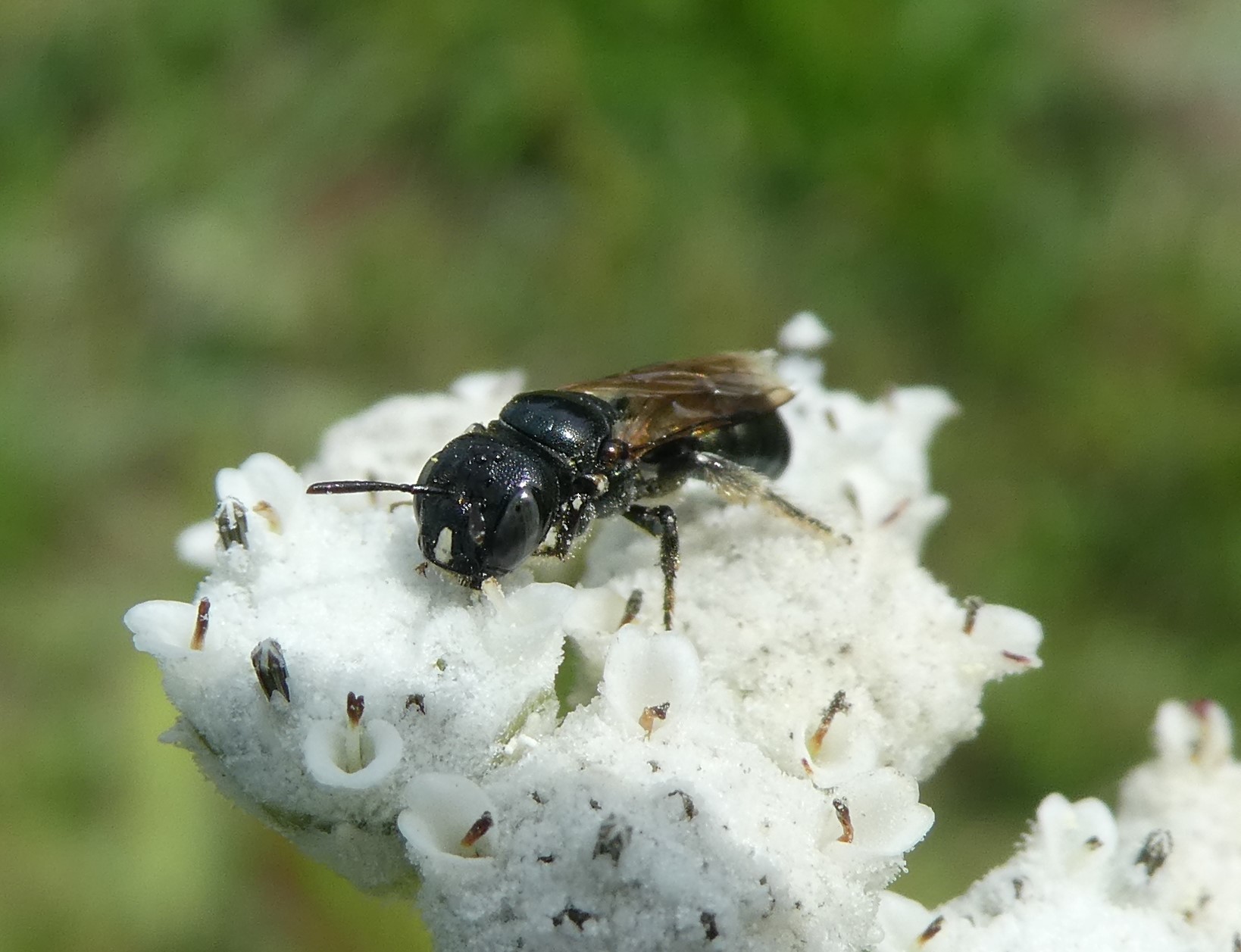
Mining bees (Andrena spp.)
ID Characteristics: Black with light or dark hairs. Prominent pollen carrying hairs (scopa) on rear legs and side of thorax, appearing to carry pollen in its “armpit”. Females will often have a line of light hairs along the inner edge of their eyes (think eyebrows) and males will often have a patch of light fuzzy hair on their face. Many emerge in the spring, but some are present in the summer or fall. 5.5-15mm
Nesting: Solitary, ground nesting. Will excavate nests in a bare patch of soil, at the base of shrubs, or under leaf litter. Prefer sandy soils.
Mining Bee, by Amber Barnes
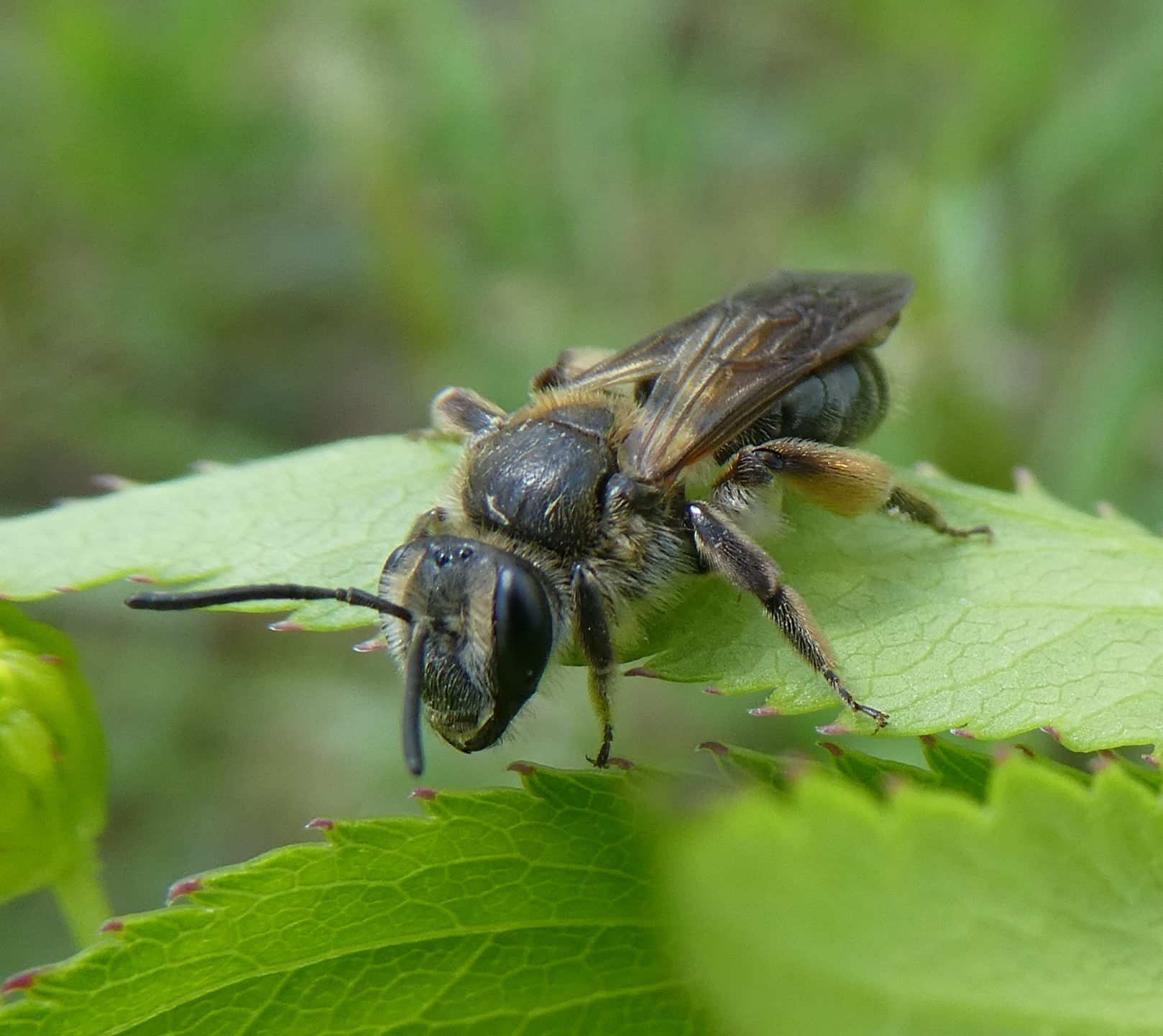
Sweat bees (Halictidae spp.)
ID Characteristics: This is a diverse genus with numerous species that vary in color and size. In general, there are two forms: metallic green or black/brown with light bands of hair on the abdomen. Body is generally slender and pollen is carried on rear legs. May harmlessly land on your skin in the summer to collect salts from your sweat. 3.5-13mm
Nesting: Depending on the species, nesting habits can be solitary, communal, or eusocial. Many species are ground nesting, but some will also bore into rotten wood of decaying trees and nest there.
Metallic Green Sweat Bee, by Amber Barnes
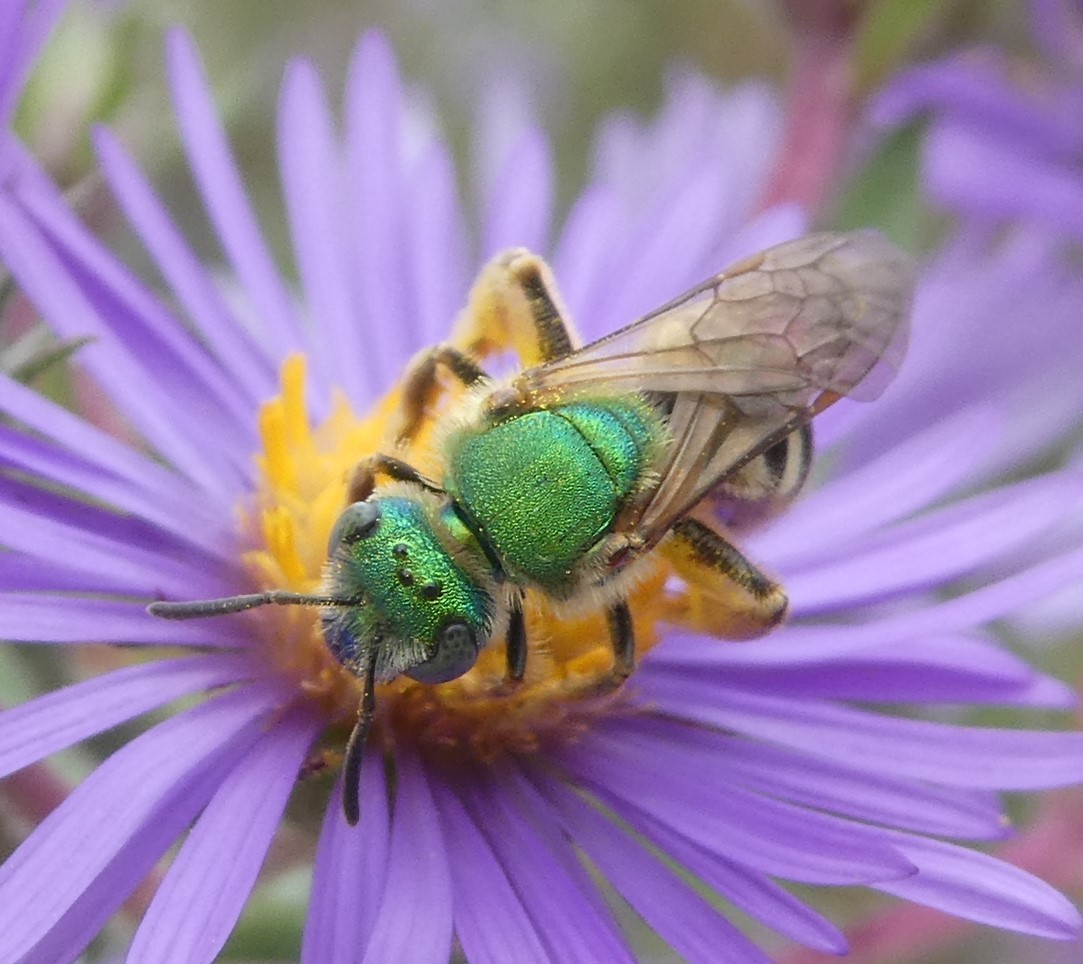
Sweat Bee, by Anthony Colangelo
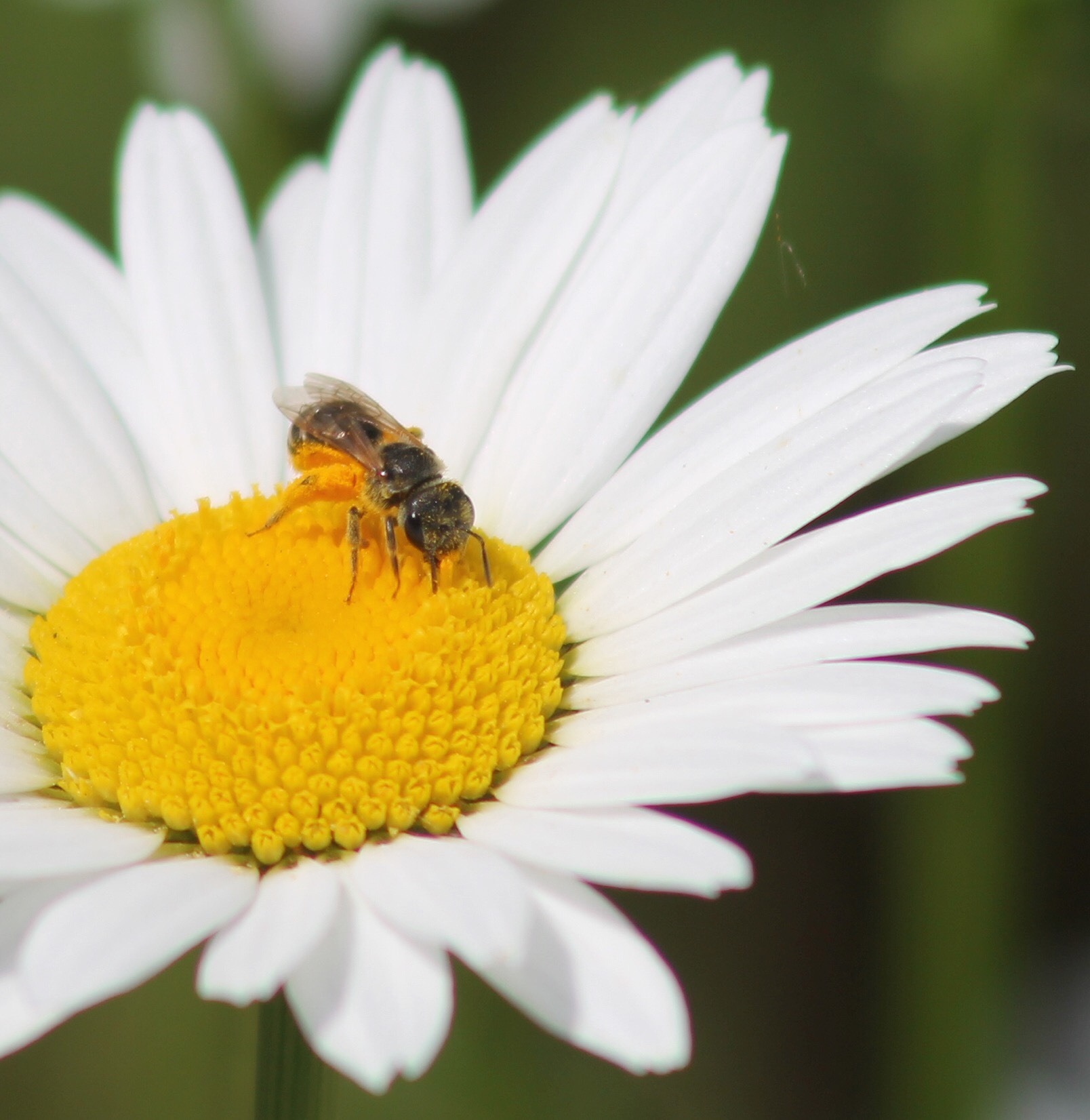
Yellow-faced bees (Hylaeus spp.)
ID Characteristics: Small, slender, nearly hairless, black body with yellow markings on the leg joints and face. Males will have a mostly pale white or yellow face, while females will have small white or yellow markings, often triangular near the eyes. Abdomen is often long, narrow, and slightly pointed. Female does not collect pollen externally, but will ingest it and regurgitate the food when back in the nest. 3.5-8mm
Nesting: Solitary, twig or wood nesting. Will utilize hollow twigs or old beetle borings in dead wood.
Yellow-Faced Bee, by Amber Barnes
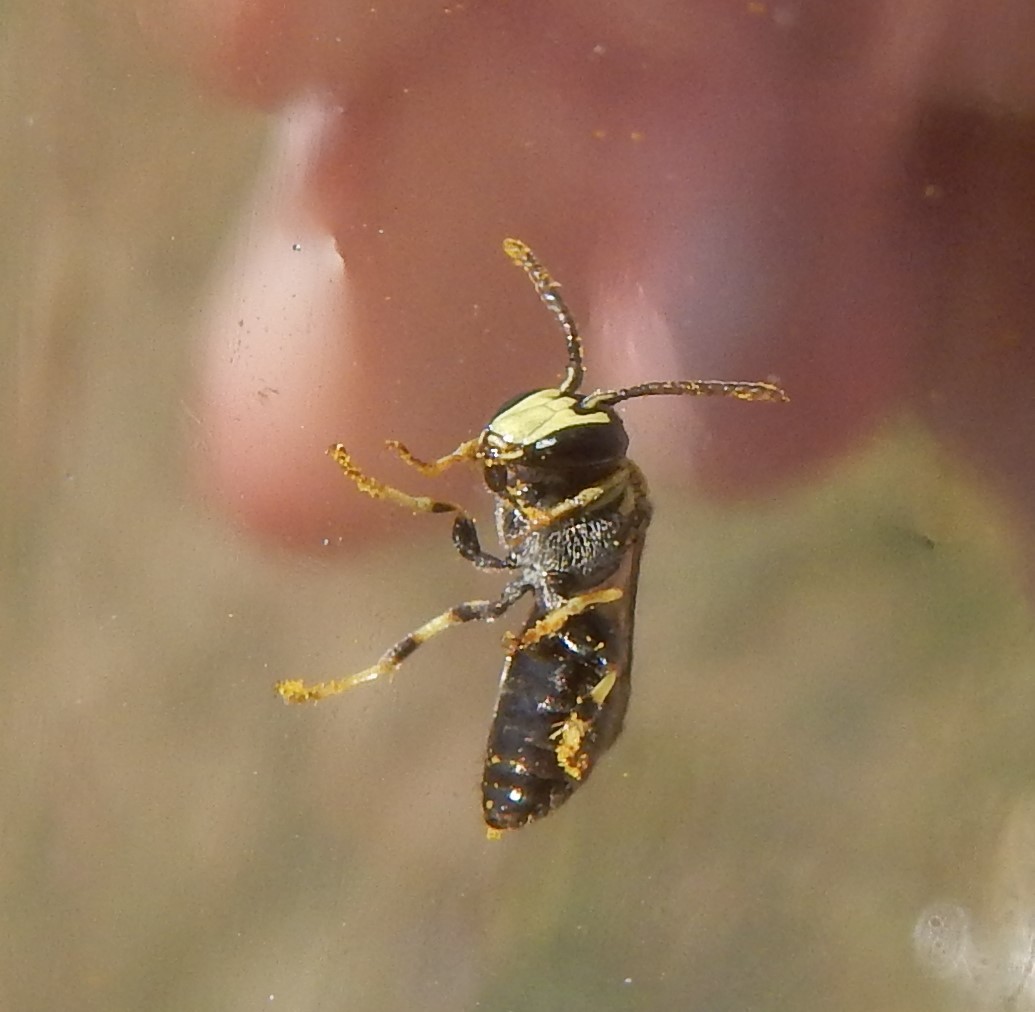
Long-horned bees (Melissodes spp.)
ID Characteristics: Black body covered in dense pale or dark hairs. Hairs on rear legs used for carrying pollen may be noticeably long. Males have extra-long antennae. Many are especially attracted to sunflowers, daisies, and asters. 8-16mm
Nesting: Solitary to communally ground nesting. If a site is favorable, many females may cluster to that location and build their own nest, or in a few species, multiple females may share a single nest entrance, but have their own burrow that splits off.
Long-Horned Bee, by Amber Barnes
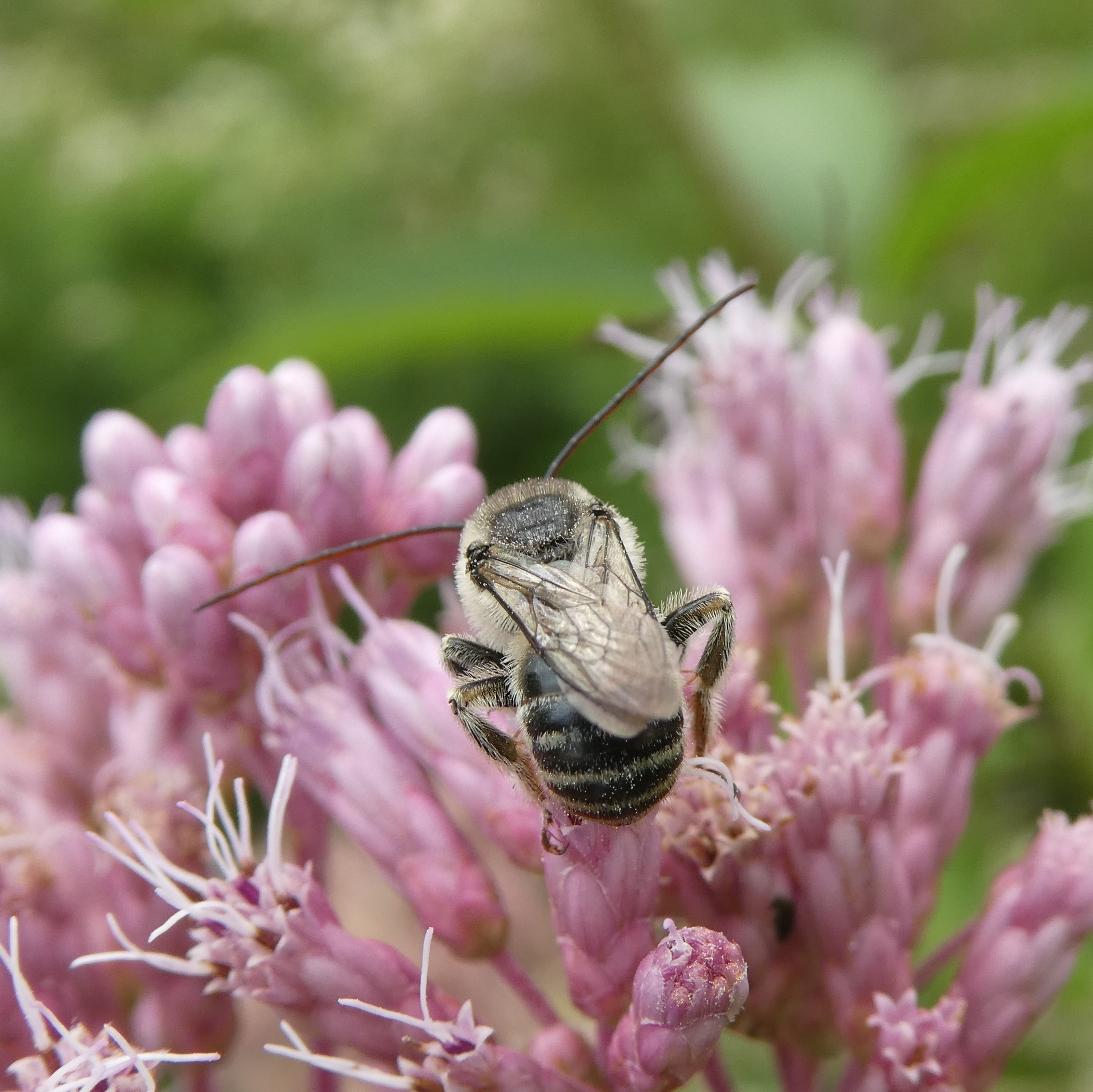
While it is becoming more widely understood that insects are facing unprecedented declines in their abundance and diversity, we have largely taken for granted the ecosystems they keep running without taking proper stock of who’s out there “working the fields”. While there is far too much diversity to cover every bee in this post, my goal is to introduce you to some of the bees that you might encounter while observing pollinators in your backyard or local natural area. I hope that you have enjoyed learning a bit more about some of the unsung heroes and heroines of our landscape! With the photos and descriptions above, you too can start monitoring your natural areas to discover the wonderful world of pollinators right outside your door! If you’d like to track and share some of your discoveries, please join our new citizen science effort and download the free Insight app on your iPhone to join the growing community of pollinator monitors. If you’d like to see an android version released, drop us a note (and donation) to help us get funding and show partners that there is a great need and desire to expand this service.
Thank you for reading this blog post and for your interest in pollinator conservation! I’ll end this with one of my favorite quotes: “Never doubt that a small group of thoughtful, committed citizens can change the world; indeed, it's the only thing that ever has.” - Margaret Mead
